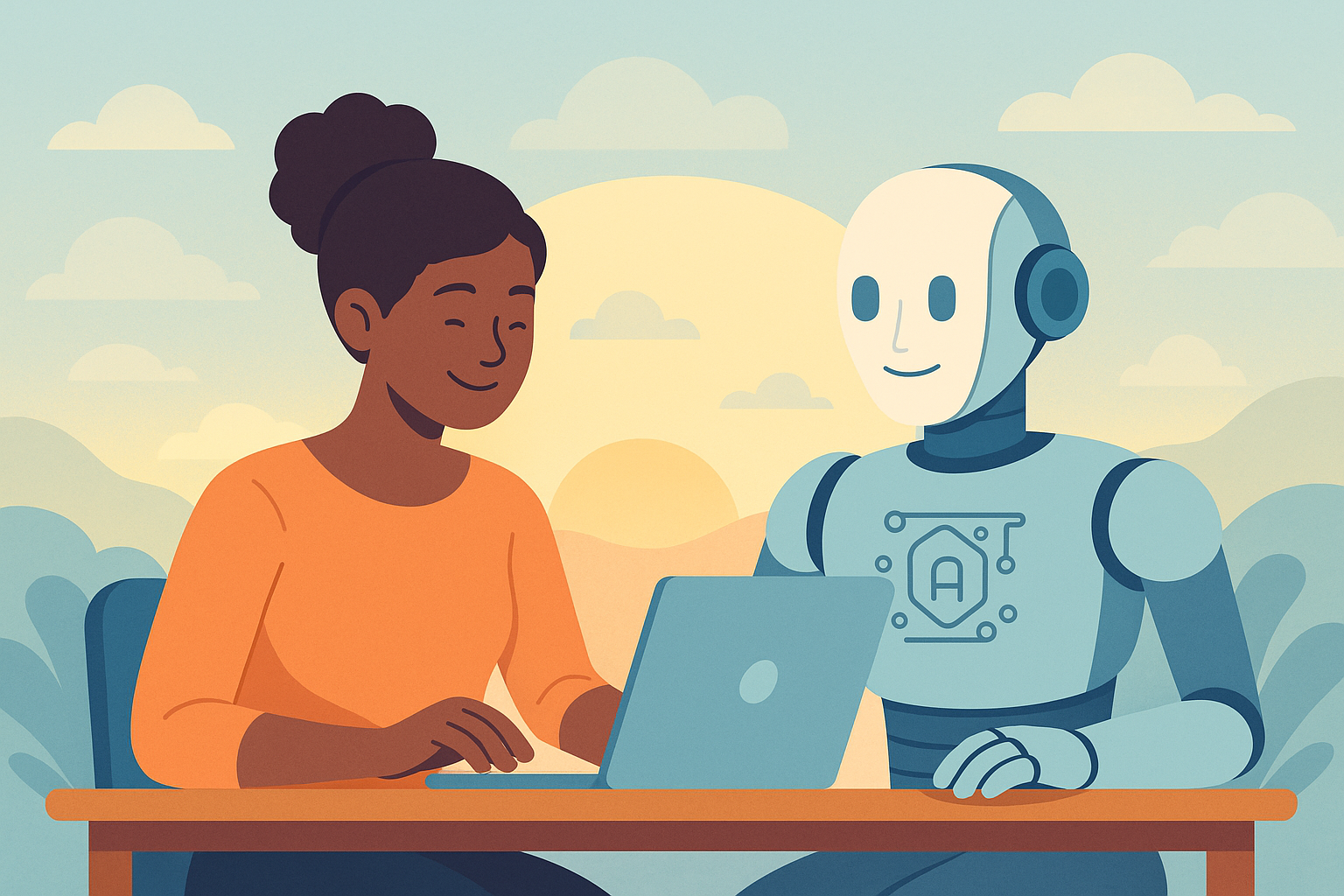Okay, folks, let’s talk about work. It’s evolving faster than a chameleon in a paint store, and AI is a major driver of that change. But ditch those Terminator fantasies of robots stealing your lunch and your paycheck. The real story is way more exciting: AI is becoming our ultimate sidekick, giving us superpowers to unlock our full potential and achieve productivity and innovation that’ll make your head spin. This ain’t about replacing humans; it’s about leveling us up, augmenting our brains and brawn so we can focus on the good stuff: strategic thinking, mind-blowing creativity, and those head-scratching problems that only a human can solve (for now).
Freeing Up Your Mind and Your Schedule: AI Kicks the Mundane to the Curb
One of the most awesome ways AI is transforming the workplace is by tackling those repetitive, soul-sucking tasks that make you want to scream into a pillow. Think about it: data entry that makes your eyes glaze over, scheduling meetings that could’ve been a Slack thread, generating reports that even a robot would find boring, sifting through a mountain of info to find that one golden nugget. AI-powered tools are here to rescue us from this digital drudgery. They handle this crap with speed and accuracy, freeing up our precious time and mental bandwidth for activities that don’t make you want to quit your job.
Imagine what you could actually accomplish with those reclaimed hours! You could finally tackle that strategic project that’s been gathering dust, brainstorm ideas that are truly innovative (not just a rehash of last year’s campaign), or, you know, maybe even take a lunch break that doesn’t involve inhaling a sad desk salad. And the best part? Science backs this up! Studies show that employees who ditch the drudgery thanks to AI are happier, more engaged, and generally less likely to throw their computers out the window.
Smarter Decisions, Faster: AI-Powered Insights to the Rescue
We’re living in the age of Big Data, people. The problem isn’t a lack of information; it’s making sense of the firehose of crap coming at us. This is where AI swoops in like a data-crunching superhero. It can analyze complex datasets, identify hidden patterns, and extract actionable insights faster than you can say “spreadsheet fatigue.” AI provides us with a solid, data-backed foundation for making smarter decisions, empowering everyone from marketing gurus to financial wizards to make choices that are, you know, actually effective. This leads to better outcomes, a more agile organization, and fewer of those “oops, maybe I shouldn’t have greenlit that” moments. Companies like T-Mobile are already crushing it with AI-powered personalization, proving that data-driven decisions can lead to seriously happy customers and a healthier bottom line.
Boosting Creativity, Supercharging Productivity: AI as Your Muse
Let’s kill this myth that AI will stifle human creativity. It’s actually the opposite! AI tools are proving to be powerful catalysts for innovation, assisting with brainstorming, generating initial drafts that aren’t completely terrible, and even creating design prototypes that spark new ideas. For writers, AI can slay that dreaded writer’s block (hallelujah!); for designers, it can suggest novel combinations of colors and shapes; for developers, it can automate code generation and testing, freeing up their brains for the really tricky stuff. This human-machine collaboration isn’t just about speed; it’s about pushing the boundaries of what’s creatively possible. The result? A massive productivity boost, as employees achieve more in less time, with AI handling the grunt work of data processing and those endless, repetitive iterations that make you question your life choices.
The Rise of the Augmented Human: We’re Leveling Up, People!
AI isn’t just about making us faster; it’s about making us better. In many fields, AI is augmenting human skills and expertise, leading to the rise of the “augmented human” – and it’s not as cyborg-y as it sounds. Think about healthcare, where AI helps doctors diagnose diseases with greater accuracy and personalize treatment plans (institutions like the Mayo Clinic are doing groundbreaking work here). Or manufacturing, where AI-powered robots work alongside humans to perform physically demanding or dangerous tasks, making the workplace safer and more efficient. This synergy between human and machine is unlocking new levels of performance and achievement, and it’s pretty damn exciting.
Navigating the Future: Let’s Talk About the Robot in the Room
Okay, let’s address the elephant in the room: job displacement. It’s a valid concern, and we shouldn’t pretend it doesn’t exist. But the narrative is shifting, and for good reason. History has shown us that technological advancements, while disruptive, ultimately create more jobs than they destroy. Think about the internet – it killed some jobs, sure, but it spawned entire industries and millions of new roles. The key is to embrace a culture of continuous learning and upskilling. As AI takes over routine tasks, the demand for uniquely human skills – critical thinking, emotional intelligence, creativity that goes beyond algorithms, and complex problem-solving that requires a healthy dose of intuition – will only skyrocket. We need to invest in developing these “future-proof” skills, focusing on what some call “Authentic Intelligence,” where human ingenuity is amped up by AI’s power.
A Beautiful Partnership for Progress (And Maybe a Little Less Stress)
AI is a transformative technology, and its potential to empower employees is freakin’ huge. By automating the boring stuff, providing mind-blowing insights, fostering creativity, and augmenting our abilities, AI is enabling us to be more productive, innovative, and engaged in our work. As we continue to integrate AI into our work lives, we gotta prioritize a human-centric approach, leveraging technology to unlock human potential and build a future where both humans and AI thrive together. It’s a journey of partnership, leading to a more efficient, intelligent, and, dare I say, more human workplace. And honestly, who wouldn’t want that?
